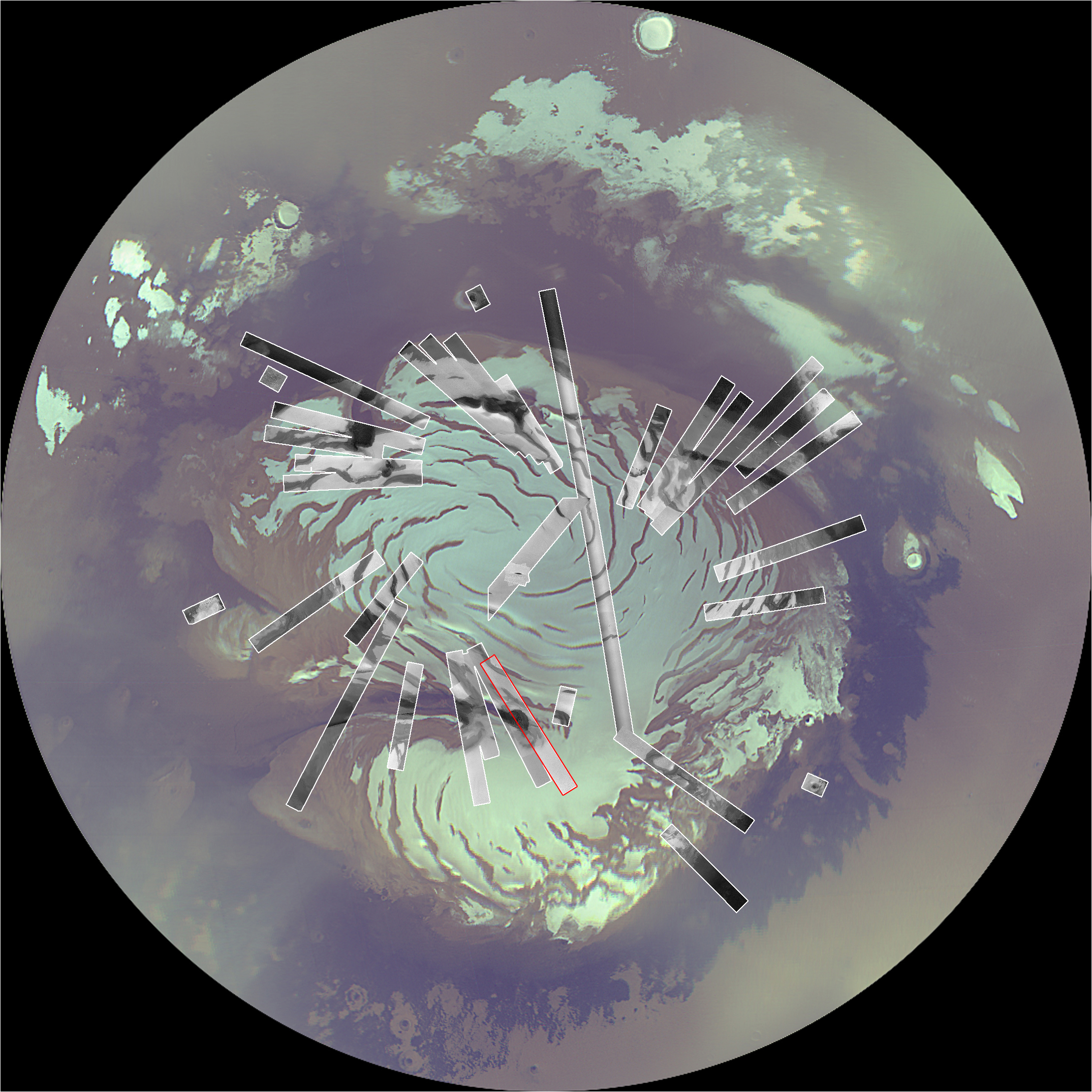

CTX-8A: Map of CTX North Polar Coverage Click on image for 2.4 Mbyte 900 m/pixel map. Image credit: NASA/JPL/Malin Space Science Systems |
CTX-8B: Image of North Polar Chasma Boreale 24 meter/pixel version (5.2 MBytes) 12 meter/pixel version (23.4 MBytes) 6 meter/pixel version (full resolution) (WARNING LARGE IMAGE in LZW-TIFF format )(134.8 MBytes) Image credit: NASA/JPL/Malin Space Science Systems |
|
Northern Mars is near the middle of its summer, and the continued southern movement of the sun will have two main impacts on imaging: the illumination will get worse as eventually the entire polar region will be in darkness during winter, and northern hemispheric dust storms and polar cloudiness will obscure the surface. Because now is the best time to be imaging the north polar region until 2008, the CTX team is devoting much of its imaging resources to acquiring images of the polar region. This image shows the MARCI north polar mosaic (see also the MARCI release) with the coverage acquired by CTX in less than two weeks. Following conjunction, the team will devote as much of November as the atmosphere permits to imaging the polar region. Marked in red on this map is the footprint of the CTX image shown in CTX-8B.
Chasma Boreale is a large valley that cuts into the north polar cap and layered materials. The uppermost portion of this valley (84.9°N, 356.6°W), its head, is marked by a kilometer high escarpment that allows both the subsurface layering to be seen and to extend these layers to nearby sloping surfaces that also cut into the materials. The floor of the Chasma Boreale is a cratered plain that has considerable sand on it. In part the sand appears to be eroding out of the escarpment. This CTX image was taken in support of CRISM and HiRISE observations that are the specific topic of the 16 October 2006 press conference. Further details can be found at http://mars.jpl.nasa.gov/mro/. |
Malin Space Science Systems built and operates the CTX and MARCI onboard MRO at its facilities in San Diego, California. The Jet Propulsion Laboratory operates the Mars Reconnaissance Orbiter spacecraft with its industrial partner, Lockheed Martin Astronautics, from facilities in Pasadena, California, and Denver, Colorado.